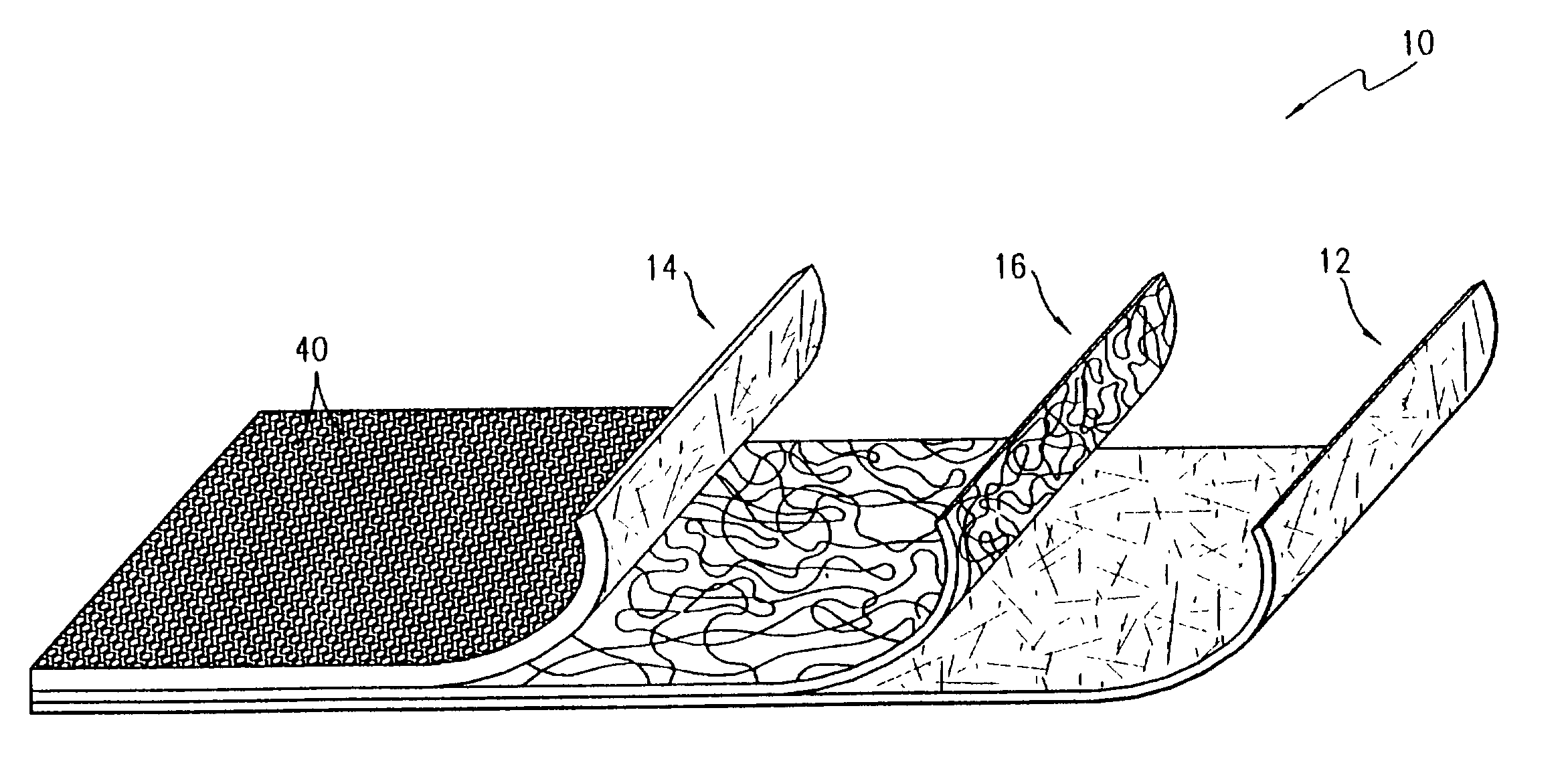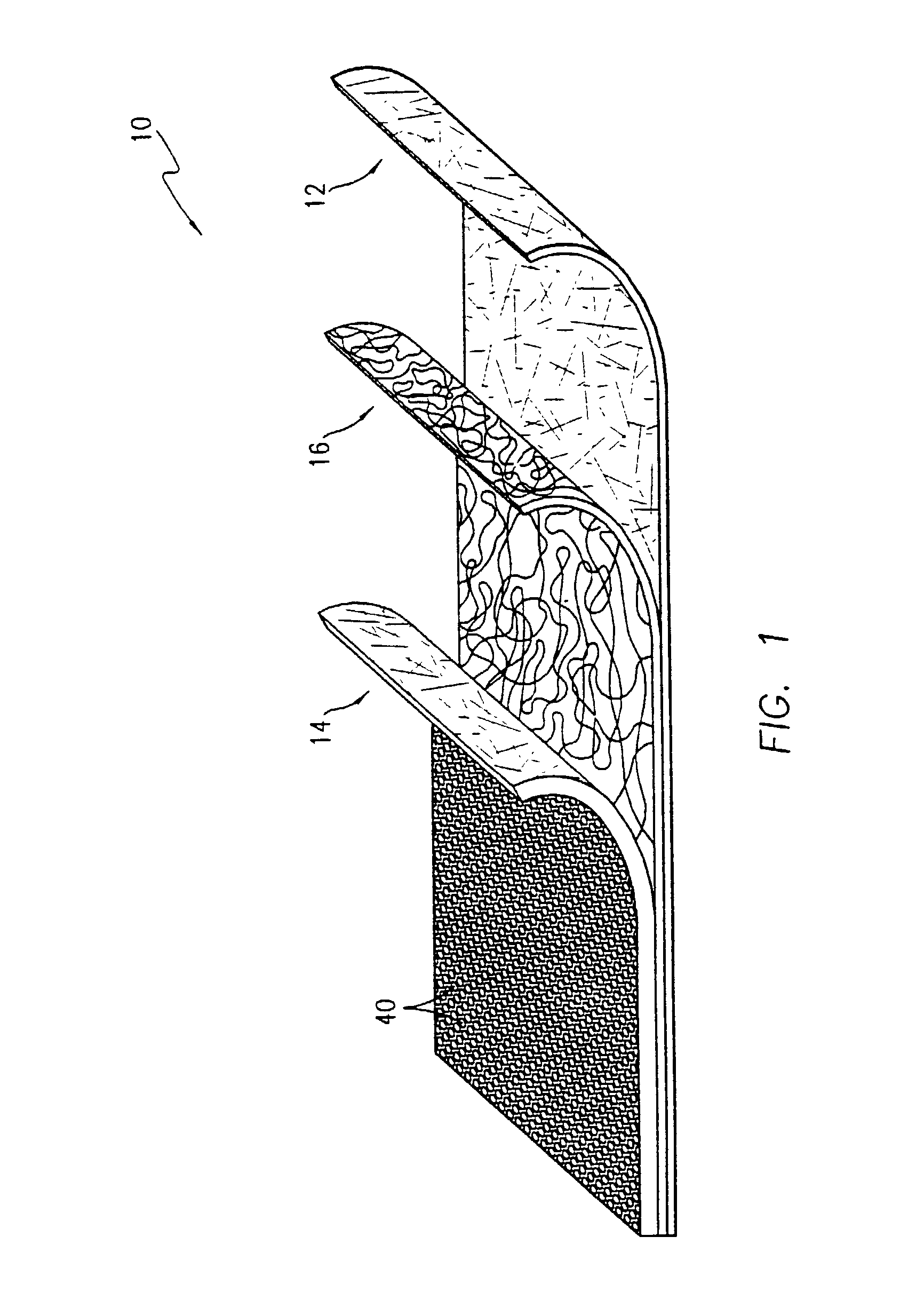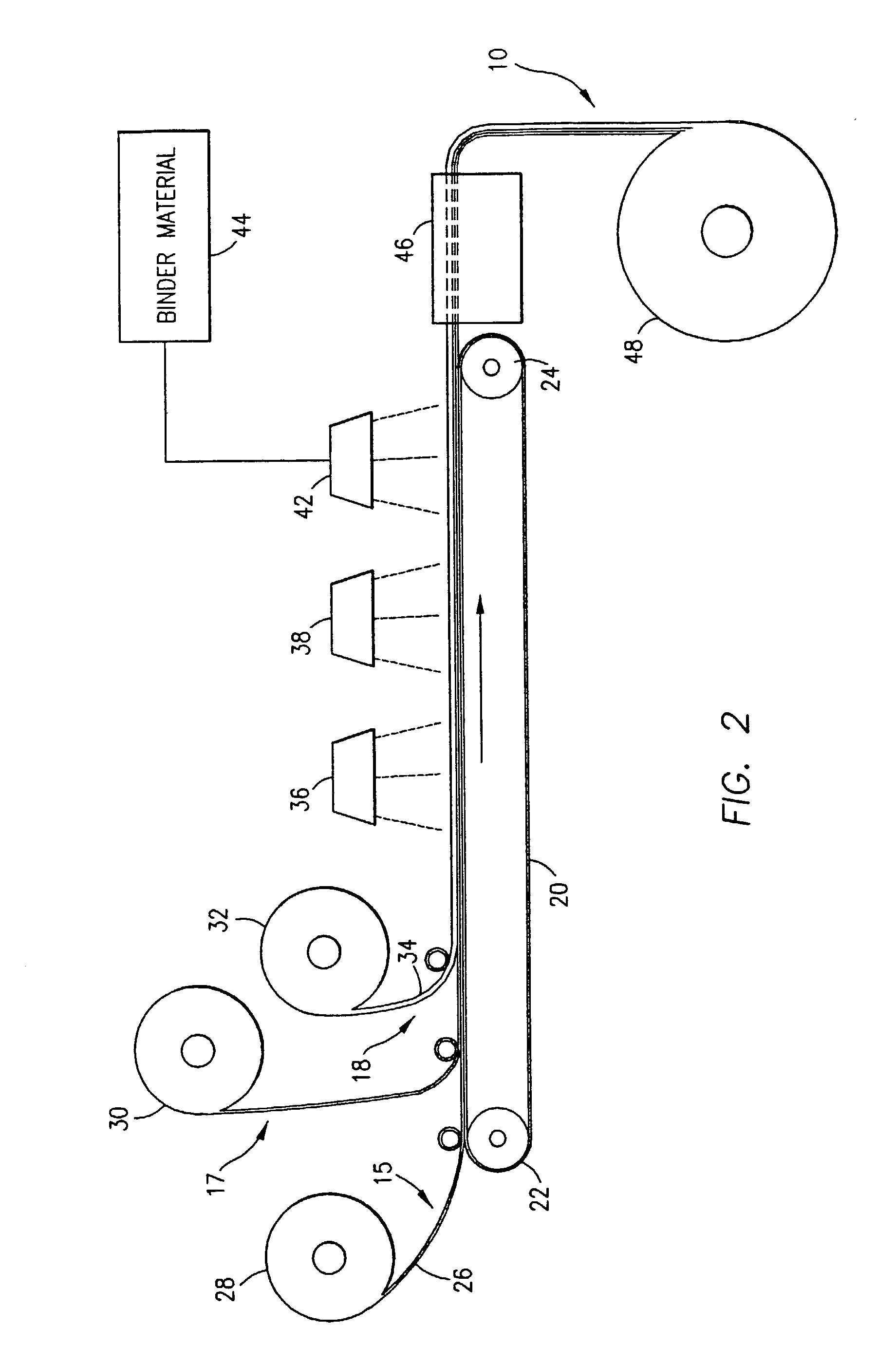Two-sided nonwoven fabric
a non-woven fabric, two-sided technology, applied in the field of non-woven fabrics, can solve the problems of no smooth surface available for wiping the skin, no smooth surface available for wiping, and both sides of the finished product, so as to achieve the effect of scrubbing a surface and smooth surface for wiping
- Summary
- Abstract
- Description
- Claims
- Application Information
AI Technical Summary
Benefits of technology
Problems solved by technology
Method used
Image
Examples
Embodiment Construction
[0014]For purposes of the present discussion, a number of definitions are provided of terms used to described the subject invention.
[0015]The term “nonwoven web” as used herein refers to a matrix of fibers forming a web which are randomly interlaid with one another in no particular pattern. Processes such as meltblowing, spunbonding, wet-forming and carded web processes are well-known in the art and commonly employed to form a nonwoven web.
[0016]The term “spunbond web” refers to a web made from one or more essentially continuous filaments, usually circular in shape, which are extruded from thermoplastic material and then rapidly reduced in diameter, e.g. by fluid-drawing or other spunbonding techniques. See, for example, U.S. Pat. No. 4,340,563.
[0017]The term “thermoplastic material” refers to a polymer which softens when exposed to heat and returns to its original condition at room temperature. Styrene polymers and copolymers, vinyls, polyethylenes, polypropylenes and acrylics are ...
PUM
| Property | Measurement | Unit |
|---|---|---|
| length | aaaaa | aaaaa |
| weight | aaaaa | aaaaa |
| basis weight | aaaaa | aaaaa |
Abstract
Description
Claims
Application Information
 Login to View More
Login to View More - R&D
- Intellectual Property
- Life Sciences
- Materials
- Tech Scout
- Unparalleled Data Quality
- Higher Quality Content
- 60% Fewer Hallucinations
Browse by: Latest US Patents, China's latest patents, Technical Efficacy Thesaurus, Application Domain, Technology Topic, Popular Technical Reports.
© 2025 PatSnap. All rights reserved.Legal|Privacy policy|Modern Slavery Act Transparency Statement|Sitemap|About US| Contact US: help@patsnap.com



